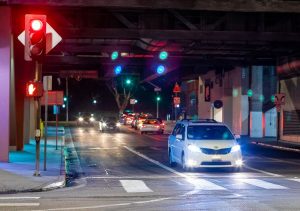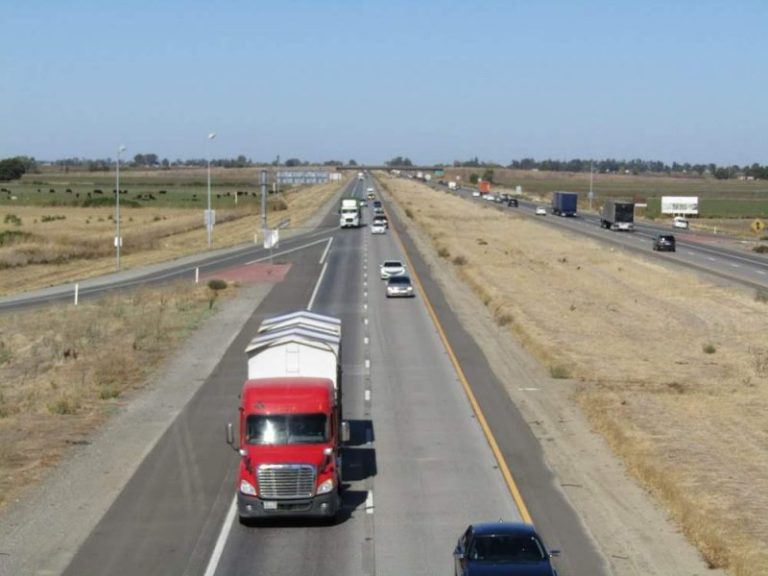Breaking Down Arizona’s Right of Way Laws
Arizona’s right of way laws are vital to avoiding potentially catastrophic auto accidents at all stages of travel, from the moment you leave your driveway to the parking space at the end of your journey.
Intersections
Intersections are where right of way questions come up most frequently; however, note that having the right of way does not mean that you should assume you can move ahead safely. In particular, you are expected to do your best to yield to and avoid pedestrians, even when they jaywalk or otherwise violate Arizona’s right of way laws. Of course, this does not absolve them of responsibility; pedestrians can certainly be at fault for a car accident.
Controlled Intersections
As a general rule of thumb, roadway signage and signals trump common traffic laws, including those which concern your right of way. If a signal is green for you, you have the right of way; similarly, red revokes your right of way, and blinking yellow asks that you yield to other vehicles. If a yield or stop sign is present, yield and stop appropriately, and then continue once your path of travel is clear.
Unmarked/ Uncontrolled Intersections
Arizona’s laws at unmarked intersections (i.e. those without functional traffic signals) are more distinct, clearly outlining your right of way in most situations:
- Pedestrians have the right of way in unmarked intersections, period. They must still exercise common sense and avoid jumping into oncoming traffic, but as long as they cross at normal intersection walkways (whether marked or unmarked/ “invisible”), you are expected to yield.
- At general four-way unmarked intersections, treat the area like a four-way stop, yielding to cars who reach the intersection before you and exercising your right of way over those who come after you. If you and another driver reach the intersection at approximately the same time, the driver on the left (or the driver making a left turn, if you’re across from one another) should yield to the driver on the right.
- At “T” intersections (those with a through-road and another, intersecting road that comes to a terminus), drivers coming from whatever road is ending should yield to those driving uninterrupted on the through-road. This also applies to freeways—treat the freeway as a through-road, and on-ramps and acceleration lanes as terminus roads. In the same way, driveways and alleys should be treated as terminus roads, yielding to through-traffic.
Niche Situations and Exceptions
Right of way laws apply at more than just intersections, and have numerous exceptions to boot:
 Vehicles within roundabouts not only have the right of way but are in fact legally unable to yield to vehicles who are entering. If you’re entering a roundabout, you yield, and if you’re exiting, you don’t.
Vehicles within roundabouts not only have the right of way but are in fact legally unable to yield to vehicles who are entering. If you’re entering a roundabout, you yield, and if you’re exiting, you don’t. - U-turns are generally legal (barring areas where signage says otherwise), but you are expected to completely yield to all other vehicles on the road when performing such a maneuver.
- Emergency vehicles with their sirens and emergency lights engaged have unconditional, total right of way in all situations. You are expected to not only yield to such vehicles but also to completely move over, switching lanes as needed to avoid obstructing their path of travel.
Right of Way in Arizona Auto Accident Fault
Violating another driver’s right of way guarantees at least partial fault in an accident, but doesn’t bar you from compensation altogether or even guarantee primary liability. If you’ve been hurt in an accident, reach out to one of our Arizona auto accident attorneys in Arizona at ELG by calling (623) 321-0566 to learn more about liability and the claims process.
Law News Feed
All NewsWho Is Liable for Damages After a Truck Accident?
According to information from the National Highway Traffic Safety Association, more than 2,500 truck accidents occur each year in Arizona. It goes without sayin…
Common Injuries After a Motorcycle Accident
Motorcycle accidents kill or severely injure individuals more frequently than any other type of crash, resulting in immense amounts of suffering and financial d…

